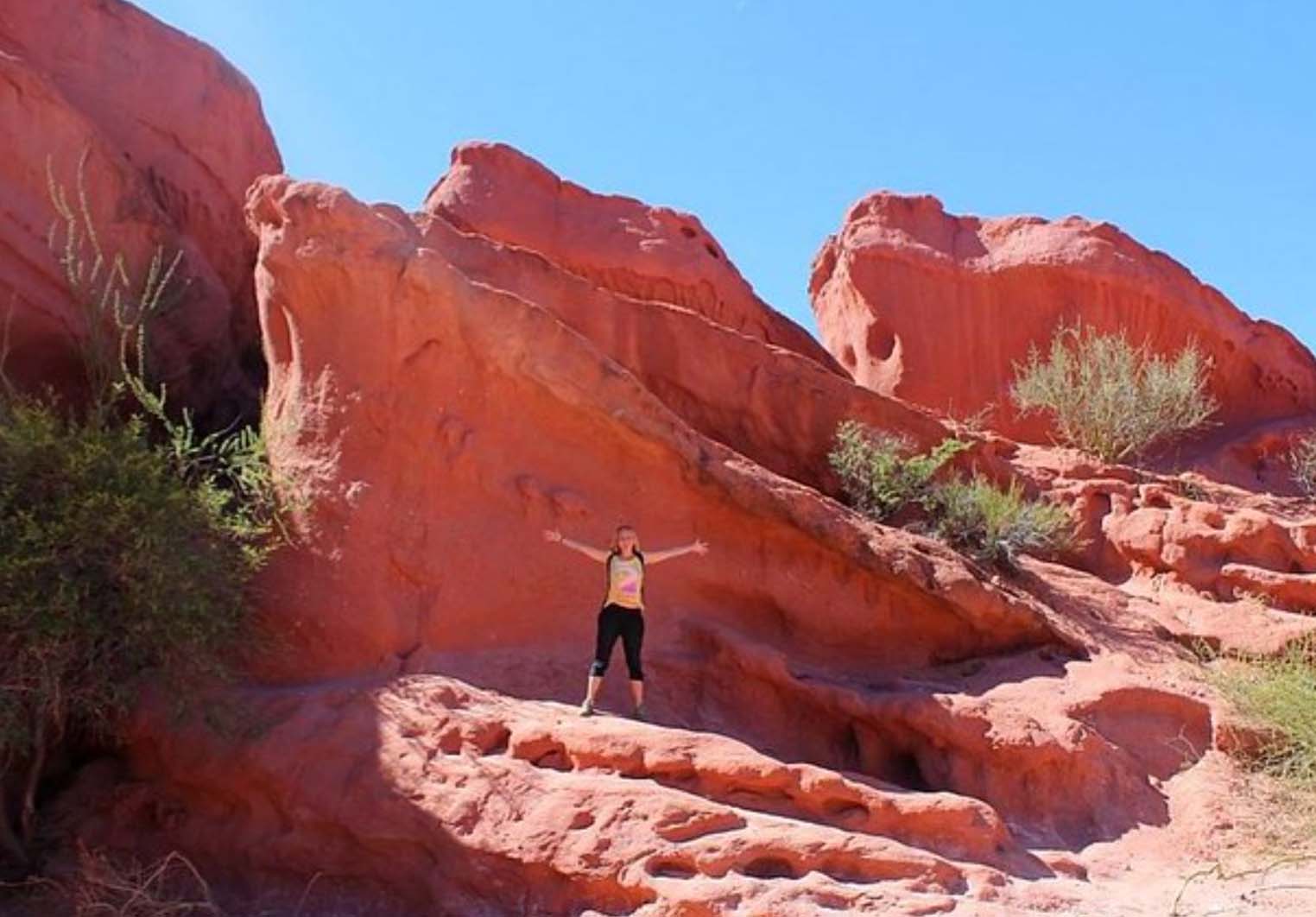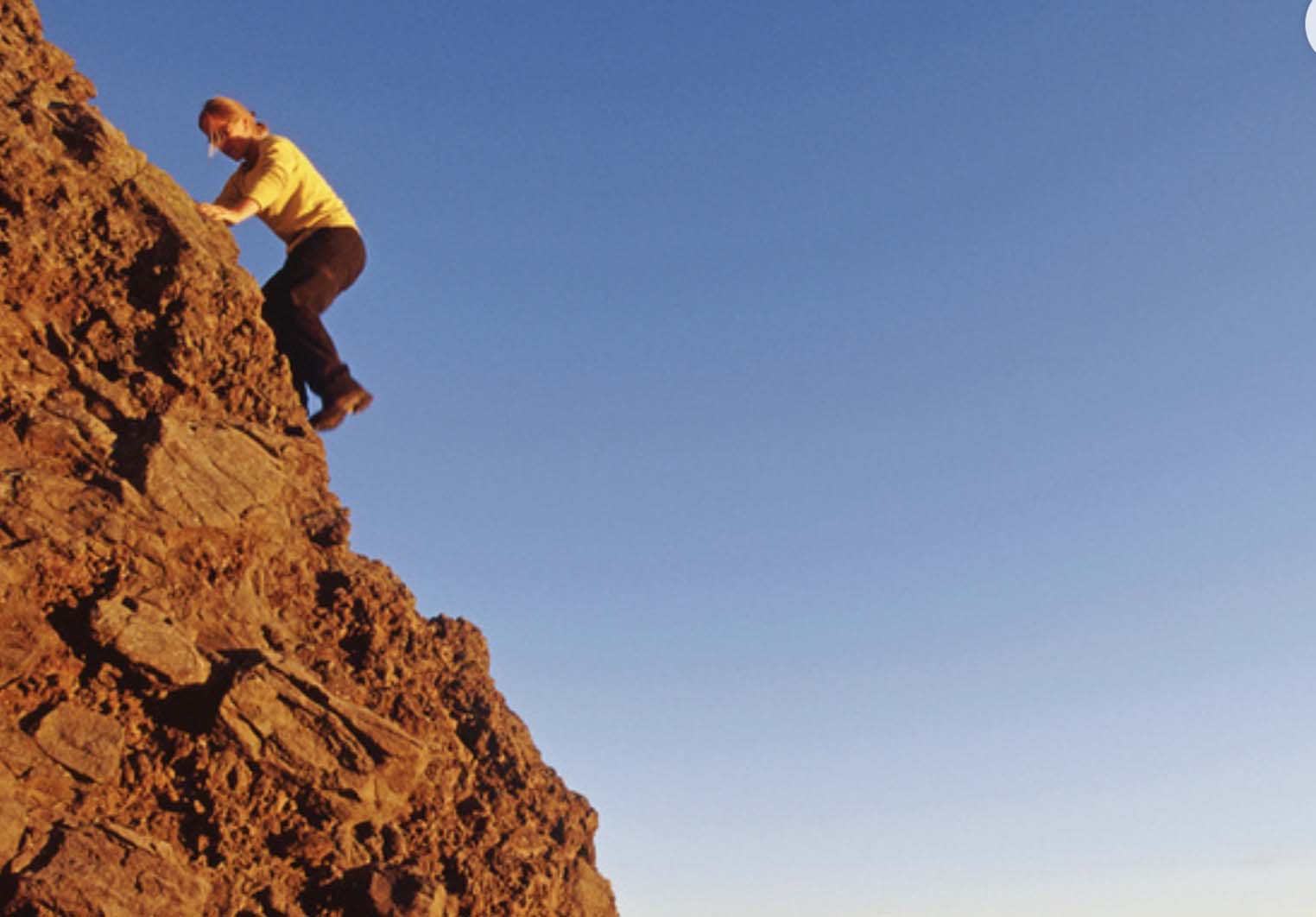As I reminisce about our time in Cafayate, I will forever recall the moment when the afternoon sun cast its warm glow upon my sleek black hair as I accelerated along the perfectly paved road. I raced between other cyclists, each of us vying for the top spot as if we were in a fierce competition. Zooming through the vineyards, there was no traffic on the road, only a few local pedestrians, and this quaint path stretched for several kilometers along the outskirts of the town, winding its way through several vineyards.
Even though it’s one of Argentina’s most beautiful destinations, I spent the entire afternoon cycling, running, and exploring rows of plump grapes, with hardly a glimpse of other tourists. Rarely did anyone mention Cafayate in my national journey, but everyone directed us to the more renowned wine country of Mendoza – perhaps this way is better!
Just like any other day, I was leisurely wandering around town when I encountered this stray dog. Its radiant smile, sizable limp, and evident hip problems swiftly won our hearts. It became our friend in an instant when it discreetly slipped into the restaurant and settled under my table, showing no interest in begging for food. Our bond was forged without any conditions or reservations.
The following morning, I sat with it in the town square, sipping coffee and indulging in a continental breakfast. Afterwards, I rented a bicycle from a nearby hotel. Given its noticeable limp, I naturally assumed it wouldn’t be able to keep pace, so I gently tried to convey that it should stay behind, enabling me to tour the vineyards without its company.
Devoid of my sense of wanderlust, on that particular morning, I found myself repeating the same phrase over and over, a mantra to convince myself that I would indeed have the opportunity to witness it later in the day. The sense of anticipation hung heavy in the air, and I couldn’t help but wonder if the experience would meet my expectations. With that thought lingering in my mind, I hopped onto my trusty scooter, ready to embark on my journey.
As I weaved my way through the dusty, sun-soaked streets of Cafayate, I was greeted by a scene of pure enchantment. This charming little town was a picture-perfect representation of a colonial-era oasis, with its buildings from a bygone era gracefully surrounding a central square. It was as if I had stepped into the pages of a historical novel, into the heart of a slumbering ancient Spanish colony.
During my stay in this captivating place, a daily ritual emerged. I would invariably find myself savoring delicious meals in the presence of the central park or its inviting surroundings, whether it was a leisurely breakfast, a sumptuous lunch, a delightful dinner, or a sweet indulgence in the form of delectable ice cream. The allure of this central spot was irresistible, drawing me in like a magnet every day.
In the northern reaches of Argentina, a sense of distinctiveness and detachment from the hustle and bustle of Buenos Aires permeated the air. It was a place where time seemed to move at its own pace, where the charm and beauty of a bygone era persisted, providing a striking contrast to the frenetic energy of the capital city. Here, the echoes of history whispered through the streets, offering a different, more serene experience that was truly unforgettable.
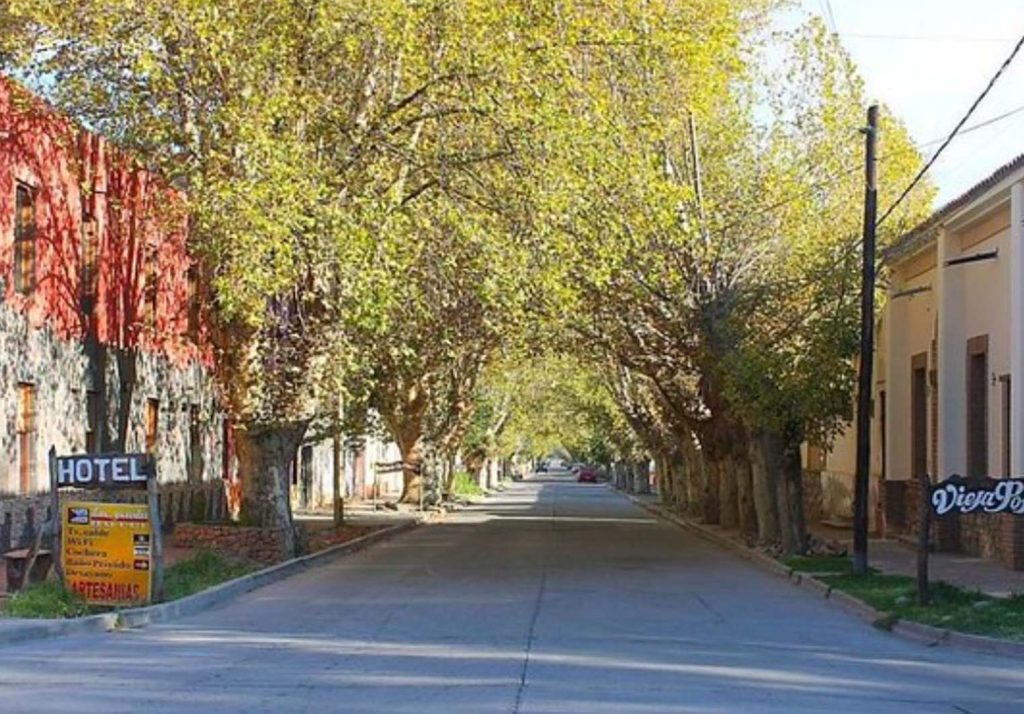
The men would stuff their cheeks with cumbersome bundles of coca leaves, a practice that appeared rather inconvenient. I was initially perplexed, even thinking that my bus driver had a facial deformity. It wasn’t until I reached the bus station and witnessed chewed coca leaves discarded in heaps that I grasped the purpose behind this curious habit.
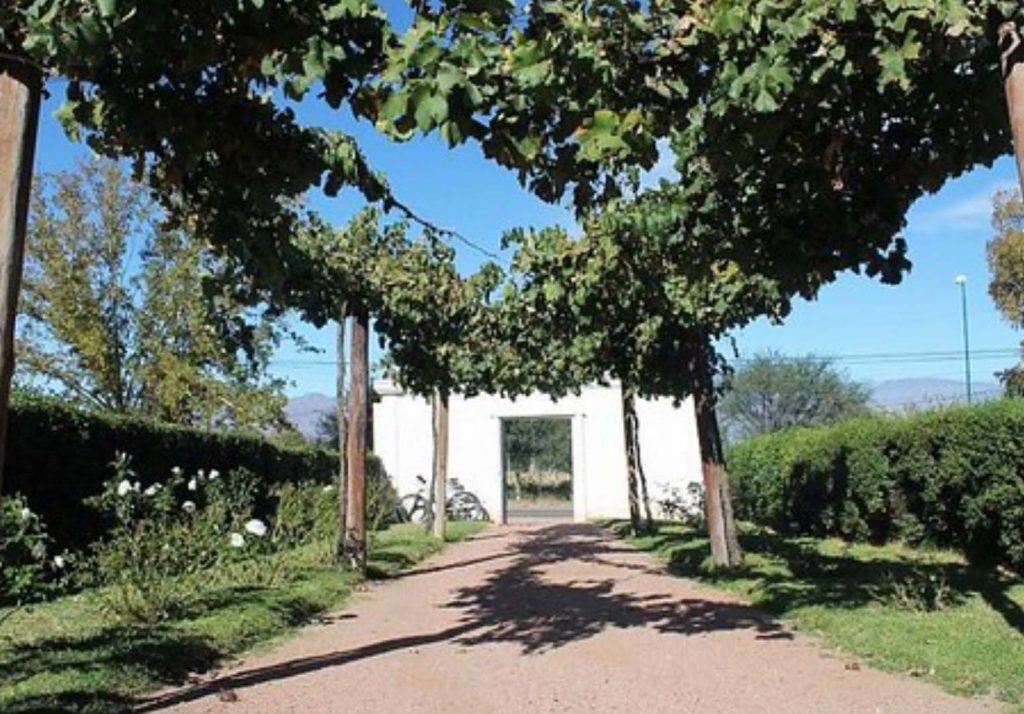

Meanwhile, my friend Dan and I were savoring substantial servings of quinoa and meat-filled empanadas. These empanadas were more commonly enjoyed in the northern regions of Chile, Bolivia, and Peru, in contrast to the empanadas filled with European-style blue cheese and meat that were prevalent in those countries. The surroundings were characterized by spacious roads and a relaxed pace of life, where people exchanged friendly waves and greetings as they went about their day. It was a glimpse into a simpler and more easygoing way of life.
Exploring the vineyards with my furry companion was an unforgettable experience. As my black stray dog began to trail me along the road, it was evident that the locals were casting curious glances our way. Its noticeable limp disappeared as it sprinted and weaved in and out between the bicycles. Ten minutes later, I was already on the outskirts of town, and my newfound canine friend was still faithfully by my side.
We spent the entire day touring various vineyards, parking our rented bicycles discreetly at the entrance. I surreptitiously brought my stray dog along as we ventured inside to partake in the tasting of a variety of Argentine red and white wines.
Cafayate was undeniably a wine lover’s paradise, yet it exuded a far more relaxed atmosphere compared to wine regions like California’s Napa Valley or even Argentina’s renowned Mendoza, the largest wine-producing region in Latin America. Here, the vineyards felt like hidden gems, tucked away in the tranquility of the landscape, where the pace of life allowed for leisurely exploration and appreciation of the exquisite wines. It was a day filled with the unique charm of Argentine winemaking and the joy of having an unexpected canine companion sharing the adventure.
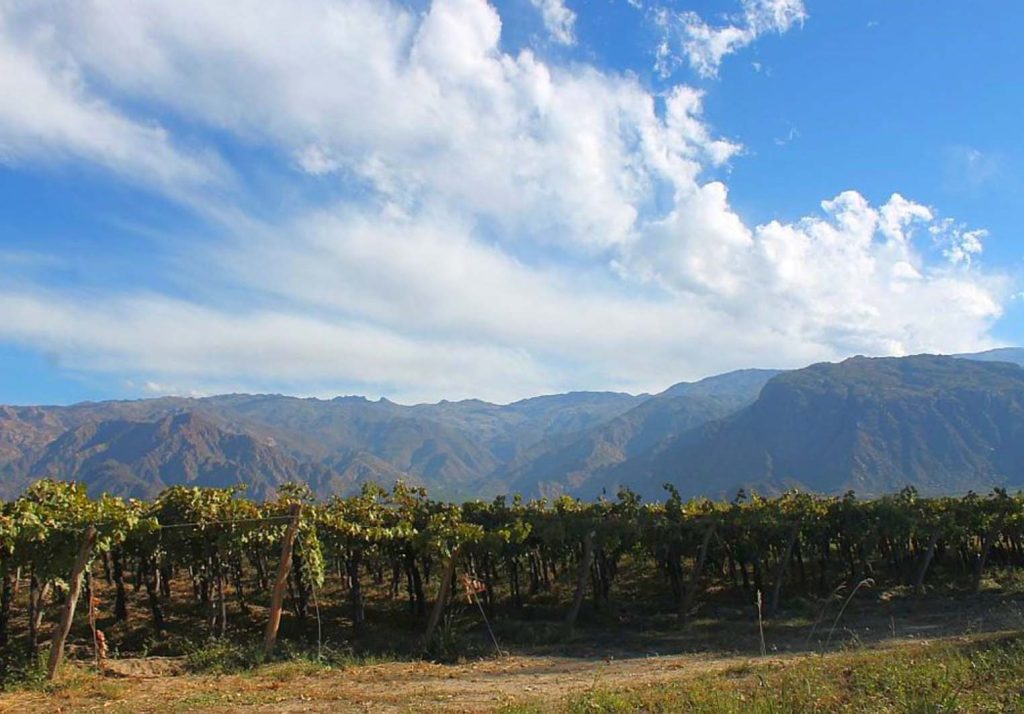
In the end, I returned in the late afternoon and decided to make a pit stop at Heladeria Miranda to sample their renowned Malbec wine ice cream, though it didn’t quite live up to the hype in terms of taste. However, I stumbled upon a more delectable destination at an alfajores shop on Avenida Guelmes, just a stone’s throw away from the southern side of the main square. Here, I had the opportunity to purchase freshly baked alfajores, which were an absolute culinary delight.
The next morning, I made a reservation for an afternoon visit to Quebrada de las Conchas (the Gorge of Shells), famous for its vibrant red earth and layered mountain vistas, reminiscent of the canyons I had previously driven through in the American Southwest or the picturesque landscapes of Sedona on my journey from Salta. I was apprehensive about how my stray companion would react to my absence while I boarded the public bus, but it appeared to understand the situation, choosing to rest in the shade near the restaurant where we had first met.
Over the course of the ensuing four hours, I explored and hiked amid the rock formations and canyons sculpted by the relentless winds and the Rio de las Conchas, marveling at the awe-inspiring natural structures and intricate patterns that surrounded me.
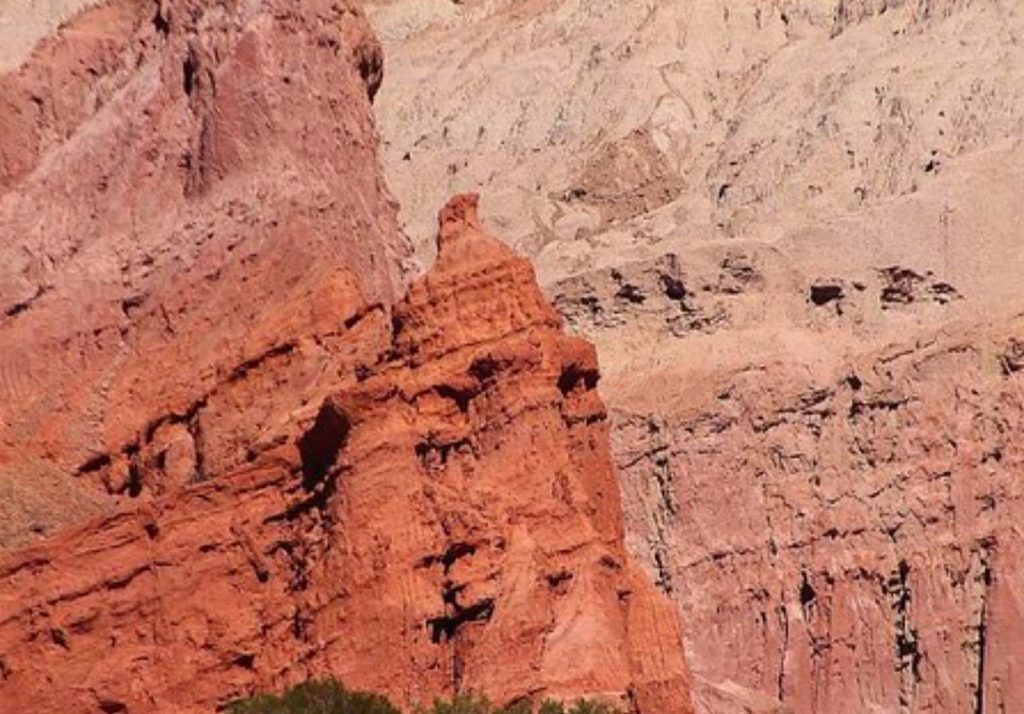
The most ideal moment for enjoying the canyon’s beauty is in the soft, warm glow of the sunset, so I suggest embarking on your journey in the afternoon. Your first stop will be Los Castillos, an imposing city wall artfully carved into three grand castles and a colossal monolith known as El Obelisco.
While you’re on the road, keep an eye out for a massive stone affectionately referred to as El Sapo, or “The Toad.” I made a pit stop at an artistic roadside stand and was captivated by the intriguing interplay and charming braided manes of the llamas.
The standout feature of this day trip starting from the town is the entirely natural open-air rock amphitheater, boasting an astounding acoustic quality that even outshines Colorado’s famous red rocks. During my tour, a young man purposefully brought his guitar to perform here, but when a gentleman began singing an incredibly beautiful love ballad, he and the rest of us came to a halt, utterly mesmerized. The sound gently swirled within the natural circular theater, creating a captivating atmosphere.
When it comes to Cafayate itself, one can’t help but feel that it’s a city designed to captivate and charm. The streets, adorned with lush trees, are lined with a captivating array of hotels, restaurants, and quaint little taverns. In stark contrast, the local residents quietly inhabit the modest, weathered houses on the town’s outskirts, a world rarely explored by outsiders.
I found myself at the local bus station, preparing for a journey back to Salta and onward to the northern border near Bolivia. The town’s largest pharmacy was a bustling hub, teeming with the town’s residents, a sight more bustling than any I’d encountered even in the heart of the central square during the bustling Saturday morning market. This scene left me pondering the whereabouts of these locals. The dust-covered attire, the tattered clothing, and the well-worn shoes hinted at a life beyond, perhaps in distant villages tucked away behind the lush green valley oasis, nestled at the foot of the arid, encircling mountain ranges surrounding Cafayate.
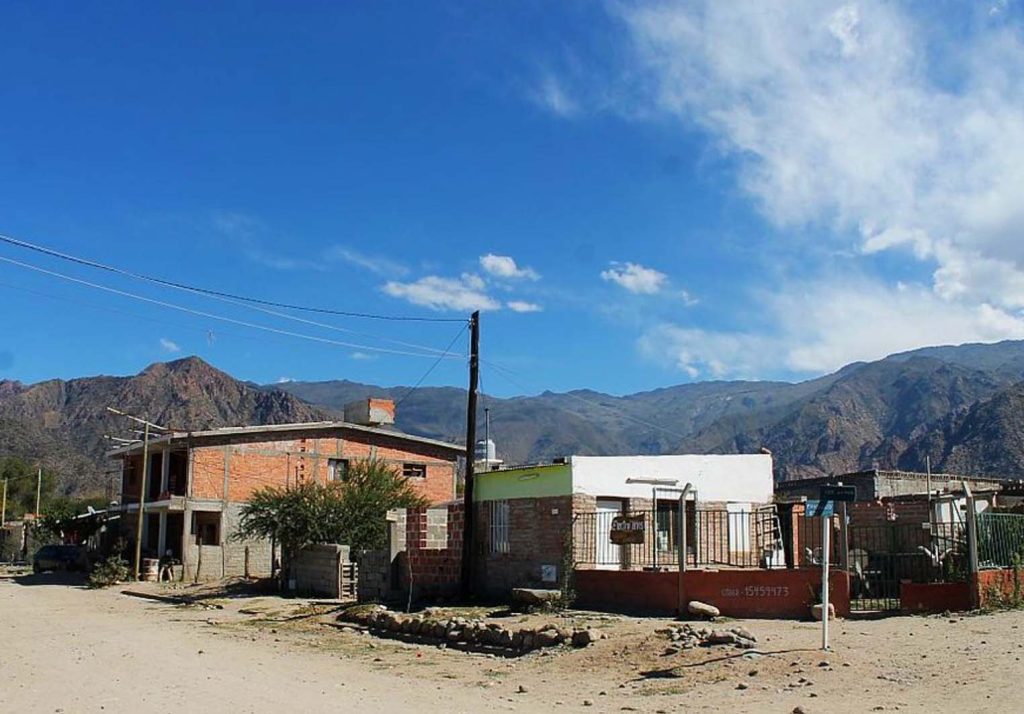
Leaving Cafayate, it’s impossible to ignore the breathtaking landscapes, akin to the Napa Valley’s descent into a colossal canyon. The deep, passionate reds and the vivid, almost surreal greens paint the valley in such a mesmerizing and distinct manner that to pass it by while journeying through the northwestern reaches of Argentina would be an unforgivable oversight. Cafayate lies a mere two-hour drive from Salta, the region’s largest city. Embarking on a week-long expedition through the Salta region, heading north, you traverse the stunning routes of Quebrada del Humahuaca, the expansive salt flats, and the indigenous village of Uruwayka.

I can’t guarantee you’ll make a furry friend in town, but if you happen to come across my adorable companion during your visit, please take it along for a journey to the vineyard – it seems to have had the happiest moments of its life there!
The Best Day Trip from Salta to Cafayate
For those seeking a delightful day trip to Cafayate, where you can visit some wineries and soak in the enchanting landscapes of Quebrada del Cafayate, you’ll find several tour companies ready to whisk you away from Salta. Prices for these day-long adventures start at a mere $39.99, offering an affordable and captivating journey.I’m looking forward to your arrival; you’re sure to love it here.
